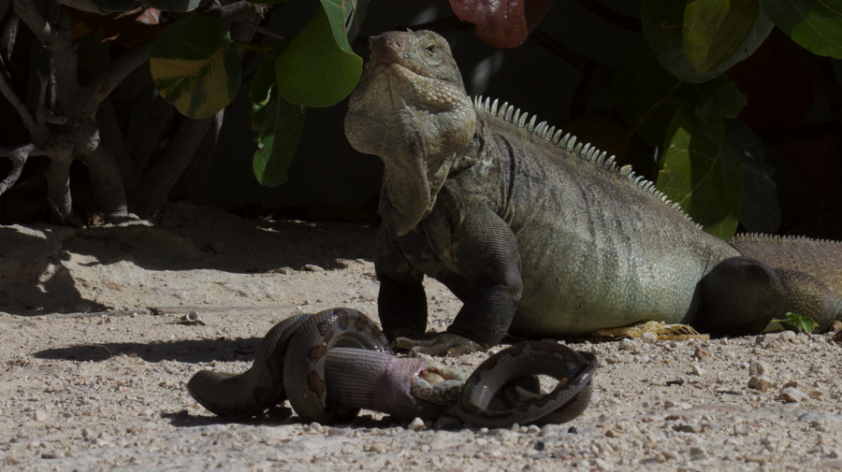
It’s tough being a lizard in the TCI
At the southern edge of the Lucayan Archipelago lie the Turks and Caicos Islands (TCI). These islands are home to many endemic species of reptiles, and the Turks and Caicos Rock Iguana, Cyclura carinata, is definitely the most notable and charismatic. This species is listed as Critically Endangered in the IUCN Red List of Threatened Species, and invasive feral mammals are, indeed, one of the main causes of population decline.
The local government in the TCI, with the help of many parties including the Royal Society for Protection of Birds (RSPB), the TCI-Department of Environmental and Coastal Resources (DECR), the TCI-Department of Agriculture (DoA), the TCI-National Trust (TCNT), the Institute for Conservation Research (San Diego Zoo Global), and Ambergris Cays Facilities Ltd., recently started a project aiming to secure the future of the Turks and Caicos Rock Iguana through the establishment of effective biosecurity plans and the monitoring and identification of suitable islands for future restoration of the species.
Due to the detrimental effect of invasive species, and the resources invested to prevent, eliminate, or contain them, we often are distracted from the natural threats that these lizard face.
Moreover, when seeing an adult iguana in the field, it would be hard to believe that these tough-looking lizards could be preyed upon by any natural species on the islands where they live.
In fact, one of the reasons why these lizards are so vulnerable to invasive mammals is that iguanas in the TCI never evolved effective strategies for evading predators, because they have almost no natural predators.
Yet, during our monitoring for the presence of invasive species on many of the islands where these iguanas live, we witnessed how tough life can be for these magnificent lizards. While resisting the invasion of rats (unfortunately found on many of the islands in TCI) and cats (more geographically restricted, but still extremely dangerous for the iguanas), these lizards also have to be wary of the only natural predator able to prey upon both young and adult iguanas: the rainbow boa Chilabotrus chrysogaster. Endemic to the TCI, these boas are smaller than our imagination would let us believe (a very large female that we recently caught during our field work was ~1.5 meters in length and ~100 mm in girth).
During our last field-working seasons we were lucky enough to witness a few of these predation events. We were, without a doubt, sorry for the iguanas, but at the same time these episodes served as a stimulus to increase our efforts and work harder to contain and possibly solve the invasive species problem: the life of iguanas in the TCI is already tough enough without the presence of rats and feral cats.













